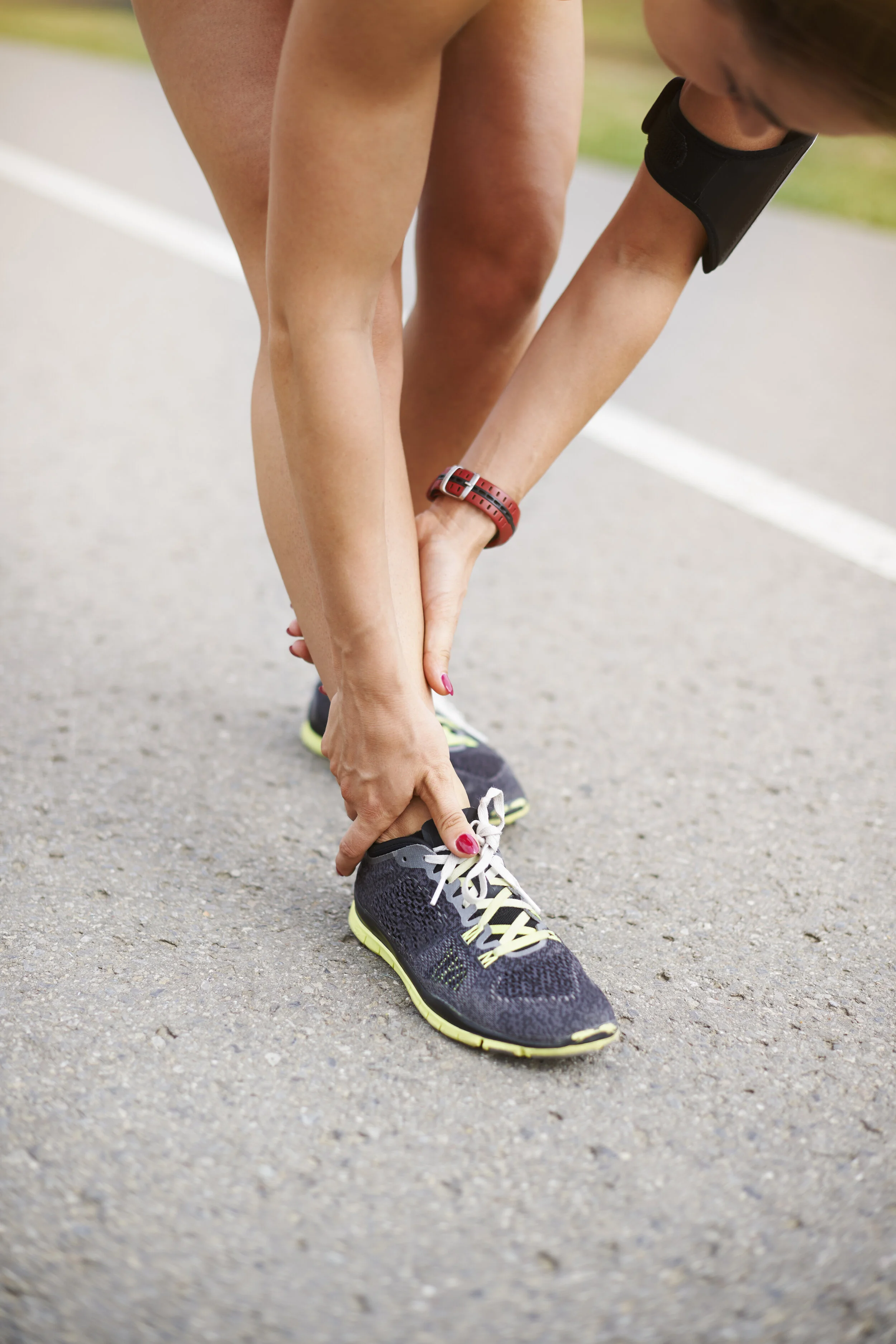Sprained Ankle /Heel Pain
FAQ
How to care for a sprained ankle?↓
Often referred to as an inversion sprain since this is the most common type, occurs when you “roll” your ankle. When this happens, the ligaments surrounding your ankle are stretched and can potentially tear. You may have pain at the ankle/foot and difficulty with moving the area following a sprain. Like most sprains, the pain usually subsides within a couple weeks, however it will likely take closer to 6-8 weeks to fully recover from an ankle sprain. It is important to regain full movement of the foot/ankle, strength of the muscles not only attaching to the ankle but up to the hip and restore balance/proprioception. 73% of people who have an ankle sprain will have another. With proper physical therapy and rehabilitation, you can avoid recurrent sprains and get back to your sport quickly and safely. You will receive some combination of stretches, mobilization techniques/manual therapy and strengthening exercises depending on your unique presentation. Exercises will involve mobility and light resistance, such as seated ankle strengthening with a band and progress to activities in more loaded positions like sitting and standing. Your sessions will also involve some balance activities to help prepare for returning you to running or sport.
What is achilles tendinopathy?↓
Your achilles tendon is the big band of tissue at the back of your ankle and is important for walking and activities of propulsion such as running and jumping. The achilles tendon helps to transmit the force during these activities from the calf muscle to the foot as you take off and is also responsible for controlling the ankle when you land. Achilles tendinopathy occurs when there is irritation in this tissue because the demand placed on it is too great for it to handle. Commonly you will feel pain behind the ankle right above where the tendon meets the heel. This area may feel tender and you might have difficulty with walking or climbing stairs. Physical therapy can help provide pain relief and restore normal mobility to the foot and ankle. The first priority is managing your pain and educating you on potential activities that could be making it worse. You will receive some combination of stretches, mobilization techniques/manual therapy and strengthening exercises depending on your unique presentation. Exercises will involve mobility and light resistance, such as seated ankle strengthening with a band and progress to activities in more loaded positions like sitting and standing. Your sessions will also involve some balance activities to help prepare for returning you to running or sport.
Do I need surgery?↓
Depends, the large majority of cases do not require surgery despite positive findings on MRI or imaging. Most will resolve with conservative treatment a.k.a physical therapy. During your initial evaluation and even during follow up visits, your physical therapist will educate you on how physical therapy can help with you specific symptoms and whether or not you’ll require a consultation with a surgeon.
How can physical therapy help? ↓
Because the symptoms and pain are individual, each patient will have a different presentation at therapy. A physical therapist will do a thorough medical history review including gathering all the information about your current pain levels, current functional deficits and how this impacts your daily activities. A movement assessment will be performed including observation of activities such as walking or getting in/out of a chair as well as movements specific to your pain location and symptoms. With this information your physical therapist can develop a personalized treatment plan to help relieve your back pain and get you back to your normal routine. Your physical therapist will likely prescribe a combination of exercises, stretches and activities to avoid while you’re recovering as well as advise you on how to resume activities once you find relief.
Range of motion exercise for sprained ankle
Trace the alphabet with your toe, encouraging ankle movement in all directions. Trace the alphabet 1 to 3 times.


